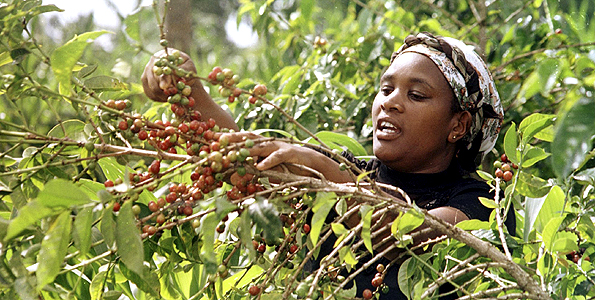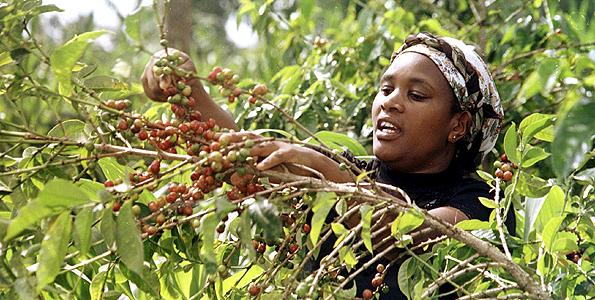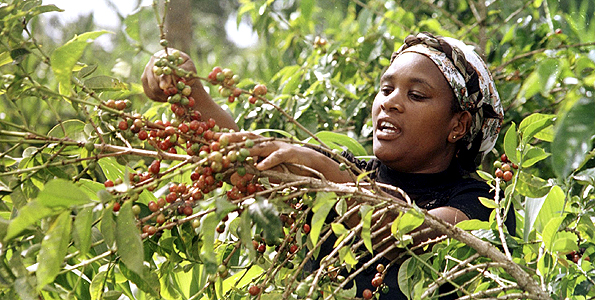Evaluation on the quality of Coffee net Coffee Bancima was treated with sun in the primeval forest of Ethiopia.
Coffee producing countries have their own grading methods and quality evaluation criteria in order to grade their harvested coffee, of course, there are also famous coffee mochas. Like Yemen in Matali, there is no uniform export specification for the country. If the common evaluation criteria of coffee producing countries around the world, it would be much more convenient for buyers, but unfortunately, the current classification criteria are still based on the national conditions of each producing country.
Having said that, we can still roughly distinguish according to the following three points.
(1) grading according to the altitude of the place of origin
(2) grading according to the sieve (size of raw beans)
(3) grading according to the proportion of screen and defective beans.
1. The quality is evaluated by the altitude of the producing area.
Generally speaking, the quality of high real estate coffee is better than that of low real estate, so the height of producing area is also included in one of the quality evaluation criteria. The higher the altitude, the lower the relative temperature, the coffee fruit can slowly mature, so that fully ripe beans have good expansibility. As a result, coffee-producing countries in Central America evaluate the quality of coffee beans almost exclusively by the altitude of their origin.
For example, coffee from Guatemala, the highest quality coffee in the country, is called SHB, an acronym for Strictly Hard Bean, and is grown at an altitude of more than 1350 meters. Mexico's highest quality SHG (Strictly High Grown) is grown in highlands above 1700 meters above sea level. SHG in El Salvador and Honduras is also grown in highlands above 1200 meters above sea level.
The main cultivation areas of coffee in Central American countries are the slopes of the hills. Planted in that place, ripe and red fruits can only be picked carefully by hand. although the cost is high, they can produce high-quality coffee with few magazines and defective beans.
2. Evaluate the quality by screen.
Countries that use sieves to evaluate quality include Kenya, Tanzania, Colombia and other Colombian producers of fresh and bright coffee (one of the types of coffee traded on the New York Futures Exchange based on origin). The so-called judging quality according to the screen means to evaluate the quality according to the size of raw beans. For all kinds of raw beans, the size of the beans is determined by a perforated iron plate screen.
The size of the hole in the sieve is 1 canopy 64 inches, so the 17 sieve refers to 17 canopy 64 inches, which means that the raw bean can pass through the sieve with a hole size of 6.75 mm.
The most advanced coffee beans in Tanzania are large granulated beans called AA, which need a sieve of more than 18 mm, while AA in Kenya also uses large granular beans with holes above 7.2mm. Colombia has two grades: Supremo and Excelso. The special grade needs a sieve of more than 17, and the upper grade needs a sieve of 14 and 16 (refers to the beans with sieve 16 mixed with 11% of 14 sieve beans).
Ethiopia Natural Forest Bench Maji G3
Country: Ethiopia
Grade: G3
Production area: Banchi Magi primeval forest
Altitude: 1500-1700 m
Treatment: insolation
Varieties: Typica, Heirloom
Producers: centralized treatment of small farmers' harvest
Flavor: jackfruit, spices, wine

Important Notice :
前街咖啡 FrontStreet Coffee has moved to new addredd:
FrontStreet Coffee Address: 315,Donghua East Road,GuangZhou
Tel:020 38364473
- Prev

The structure of coffee beans Coffee seeds Coffee net recommended Ethiopia Sidamo sun treatment Lion King
Some people often mistakenly think that coffee is directly grown with raw beans, and spend a long time thinking about how it does not germinate. Coffee is actually grown from seeds with an endocarp (Parchment). The endocarp (or parchment or paper skin) refers to the dark brown crust wrapped around the coffee seeds, and the coffee beans attached to that layer of skin are called Parchment Beans. And I'm going to open up the fully mature
- Next

Yega Xuefei Sun treatment Banki Magi Ethiopia primeval Forest China Coffee net Fine Coffee
There are eight main producing areas of Ethiopian coffee: Ekempti, Limu, Illubabor, Djimma, Harrar, Teppi/Bebeka, Sidamo, Yirgacheffe. Ethiopian coffee is highly rated in Taiwan, especially Chinese people are particularly interested in the three famous producing areas of Ethiopia, namely Harrar, Sidamo and Yirgacheffe.
Related
- Does Rose Summer choose Blue, Green or Red? Detailed explanation of Rose Summer Coffee plots and Classification in Panamanian Jade Manor
- What is the difference between the origin, producing area, processing plant, cooperative and manor of coffee beans?
- How fine does the espresso powder fit? how to grind the espresso?
- Sca coffee roasting degree color card coffee roasting degree 8 roasting color values what do you mean?
- The practice of lattes: how to make lattes at home
- Introduction to Indonesian Fine Coffee beans-- Java Coffee producing area of Indonesian Arabica Coffee
- How much will the flavor of light and medium roasted rose summer be expressed? What baking level is rose summer suitable for?
- Introduction to the characteristics of washing, sun-drying or wet-planing coffee commonly used in Mantenin, Indonesia
- Price characteristics of Arabica Coffee Bean Starbucks introduction to Manning Coffee Bean Taste producing area Variety Manor
- What is the authentic Yega flavor? What are the flavor characteristics of the really excellent Yejasuffi coffee beans?

